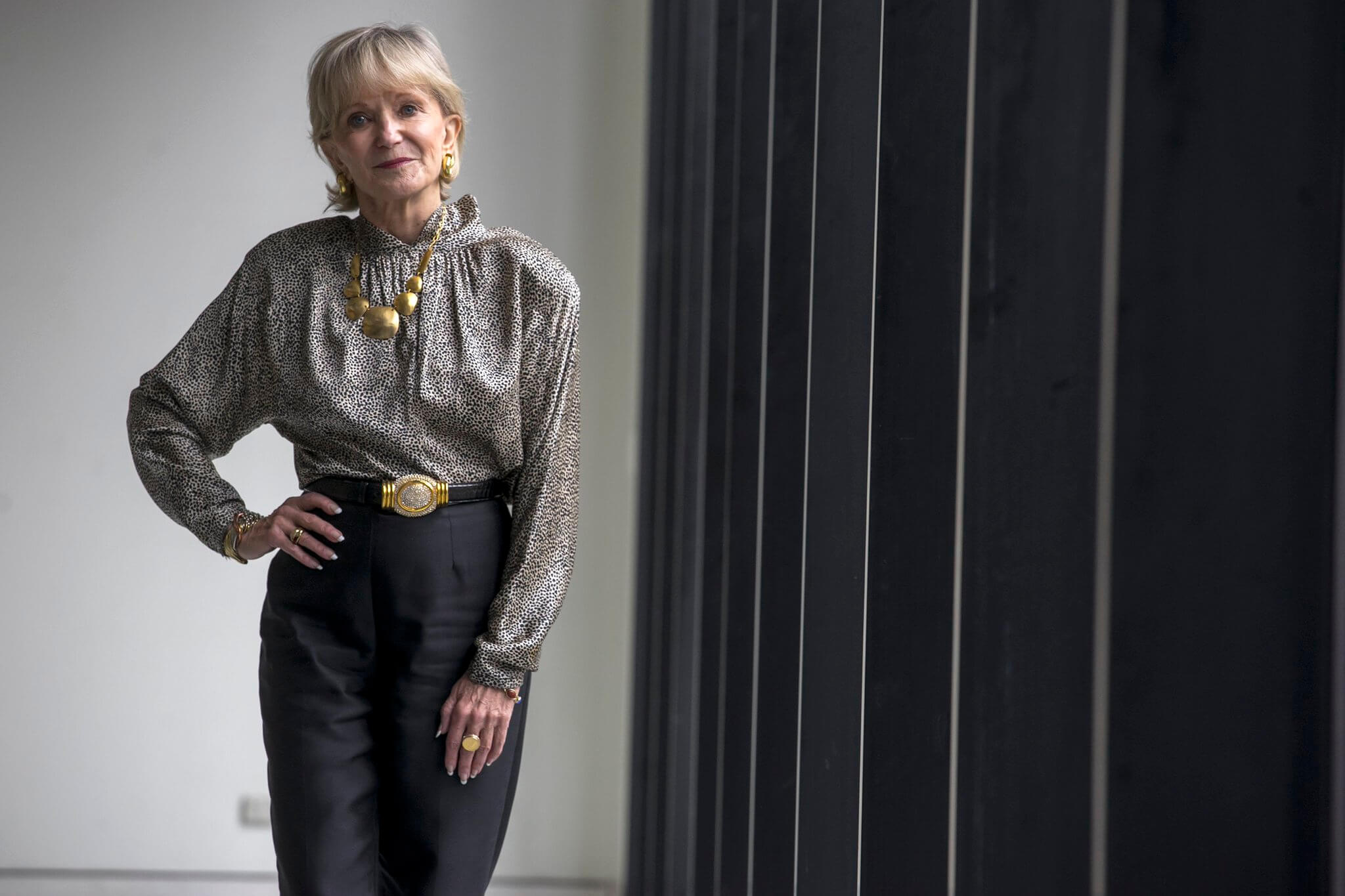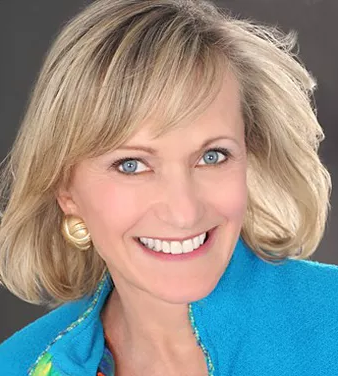Recent Posts
Archives
Meet the woman who changed the course of television history: Kay Koplovitz

In the latest in our series on female leaders, IR Department Account Director Gabriella Hold sat down with leading US entrepreneur, Kay Koplovitz. Kay is the first woman ever to head a television network as the founder and former CEO of USA Networks. Kay also created the business model for cable networks by introducing the concept of two revenue streams: licensing and advertising. Since 2000, she has been the Chairman of Springboard Enterprises: a non-profit organisation that fosters venture capital investments in women-led high growth companies. In this interview, Kay spoke about her experiences as a cable network pioneer and her advice for female and male entrepreneurs.
In the latest in our series on female leaders, IR Department Account Director Gabriella Hold sat down with leading US entrepreneur, Kay Koplovitz. Kay is the first woman ever to head a television network as the founder and former CEO of USA Networks. Kay also created the business model for cable networks by introducing the concept of two revenue streams: licensing and advertising. Since 2000, she has been the Chairman of Springboard Enterprises: a non-profit organisation that fosters venture capital investments in women-led high growth companies. In this interview, Kay spoke about her experiences as a cable network pioneer and her advice for female and male entrepreneurs.

You founded the first satellite-delivered basic cable network in the US back in the late 1970s which was really ground-breaking at the time. Can you tell me about how you came to do that and what your experience was like?
I first got very interested in satellite communications and geosynchronous orbiting satellites because I heard a lecture being given in the UK by Arthur C. Clarke when I was a student. He was talking about the power of geosynchronous orbiting satellites which had just been launched and so much more powerful [than what existed at the time]. I just became so compelled by what one could do with these satellites. I thought there was a real opportunity to have people communicate around the globe directly with one another. It was something brand new that could really open-up communications on a global basis.
After I graduated and wrote my master’s thesis, I went to work for COMSAT before I went into the cable industry. Those were the three industries that you really had to understand in order to launch a television network via satellite and cable. That opportunity came to me in 1975. It was September 30th here in the States and October 1 where you are – it was the Thriller from Manila, a big heavyweight boxing match between Muhammad Ali and Joe Frazier that is still ranked the number one heavyweight boxing match of all time. We brought that match live from Manila to Vero Beach in Florida to demonstrate to the cable industry that satellite could be used for commercial purposes. And that was clearly the night that changed the course of television history.
It was the night that also launched my career into satellite and cable. It still took two more years actually launch it, because cable was a very small industry at the time, and it needed products to build out. I chose sports programs because we had the opportunity to license 125 events live from Madison Square Garden to be distributed across the country. It took some time to clear the regulatory issues and to get the satellite dishes in and we launched in September 1977 with our first offering: 125 live events from Madison Square Garden.
I then went on to bring all the rest of sports to cable. At that time in the United States we only really had weekend sports, we didn't really have anything else. My idea was to have live sports every night, and I went on to license Major League Baseball, the National Basketball Association, the National Hockey League, the U.S. Open Tennis tournament and the Master’s Golf Tournament .
The real brilliance of it all was that we created a new business model for cable television: two revenue streams instead of just advertising. In the television business, the networks paid the television stations to carry their signal. We reversed it and had the cable systems pay us to carry the signal. It was very exciting to do.
You also co-founded and are the Chair of Springboard Enterprises – which fosters investment in women-led high-growth companies. Can you tell me why you helped set it up and how it assists women-led businesses worldwide?
Well, the reason I wanted to launch what became Springboard Enterprises was because, in the late 1990s, President Clinton asked me to Chair the National Business Council which was reporting to Congress on the progress of women-led companies. It didn't really produce results, and I wanted to do something that would give women more access to capital, because capital was constrained for women back then and still is today to some degree.
And I looked at all this money pouring over the transom but there were virtually no women. I said: “What is wrong with this process? Women have had to build businesses under capital starvation for way too long. We've got to stop this and do something about it.” The only thing we could really do, we figured - Amy Millman, the President of Springboard and I - was to go to Silicon Valley because that's where the money was. We decided the only thing to really do was to see if there really were women-led companies that could raise capital.
We got this huge response to a call out [for companies]... we got three hundred and fifty applications on paper. And I knew right then that this was a dramatically underfunded and potentially overperforming asset class called women entrepreneurs. So that's what launched Springboard. And we did it by putting together our bootcamp and our training program teaching women how to speak investor speak. We selected 26 companies to pitch [for venture capital] and what happened was really amazing: 22 of the 26 companies got funded. Two others merged their businesses because they were the same SAAS business, one woman sold her business and one wasn’t funded.
And we've been doing this ever since. We've expanded to 39 of the states across the USA and in six continents – we’ve been in Australia for seven years. We've been doing the same thing -developing the market for women entrepreneurs raising capital, connecting them to a vast pool of human capital - people who are experts who work with them, not only investors but lawyers, accountants and businesspeople who work with them through their growth stages. And this has really been part of our leadership on a global scale.
There are 769 companies that have been brought through the program that have collectively raised US$9.5 billion dollars. Sixty of these companies are in Australia. And 86 percent of the companies from the program have raised capital - that has been consistent over all of our 19 years. 82% of the companies also remain in business today. We've already had 190 exits and 19 IPOs. I think that there is real momentum that we have been able to generate – that is why our success ratio is so far above national and global averages because it's a community of entrepreneurs and influencers and investors who really see the value in what women are creating today.
What is your advice for women looking to grow their business globally?
It's about being prepared to enter into another market. You need to have the wherewithal within your company to sustain high growth, because it's going to expand the expectations and the pressure for you to deliver. So, you have to have at least enough financial resources to be able to grow in that market. You definitely have to have the right connections - you really want to build your network before you need it, and you want to associate yourself with networks like Springboard that really have these contacts on a global basis. It really is who you know and who can introduce you to the right people - that's still very much in play. It is also very important to understand what the pressures of going into a market outside of your own are going to bring for you and to be prepared for that.
And what about your advice for those men that are looking to do the same?
Well, I think men have a bit of an advantage in the sense that they've had these networks in play for a lot longer time than women have. That's not to say that only women support women - men also support and invest in women-led companies. If you're asking: “What do men entrepreneurs have to do?” they basically have to do the same thing. But they've had an ecosystem in effect for a much longer time than women, so that have many more options than women do. So that's important to realise. But basically when you really look at the interviews and the surveys that are done on women and men entrepreneurs and what their expectations are, and why they started a company and what they expect out of the company, there’s really not any difference in what they have to say. People start businesses because they are solving a problem that they have or they're solving a problem that other people have that they think is really important to solve. They want to exercise their own judgment and power, and they want the flexibility of life and building wealth. It is the same for men and women.
What is the one key thing that you have learnt from your career to date?
It is hard to just pick out one thing because you know, I’ve learned a lot of things over time. But if you're saying to me: “Well, what is the one attribute that you think has driven your career?”, I would say it’s curiosity. It’s curiosity and being open to learning a lot from other people, even your competitors, and being curious about why things are the way they are and what you can do to change them and make them better.
Curiosity is absolutely essential as is your ability to act on it. I often talk about the value that serendipitous moments of life offer you, because a lot of people - millions of people - have ideas of what they want to do, but not millions of people can actually put a plan together to take that idea forward. But there are those serendipitous moments in life that you grasp – this is the opportunity and then you act on it. And that's what I have seen many times and have utilized many times in my career. I've often thought what if, as a student, I did not walk into that lecture and hear Arthur C. Clarke talk about geosynchronous orbiting satellites. The chances of my doing what I did are next to none. It was a serendipitous, unplanned moment in life where curiosity drove me in, and it completely influenced my entire career. I would not have done and most likely would never have understood how to harness the power of these satellites for commercial purposes unless I had been at that lecture and been so motivated by him.







